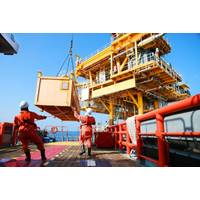
Uncertainty Reduces New Oil and Gas Investment
provided an example of that this week as it made a final investment decision for the Hammerhead development offshore Guyana. President of ExxonMobil Upstream Company Dan Ammann, said: “In collaboration with the people and government of Guyana, we’ve helped build a thriving new oil and gas industry in the country that is creating jobs, supplier opportunities, profits, and follow-on investments.&rdquo
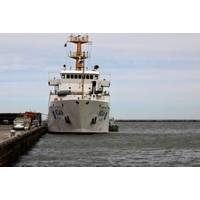
Europe Moves On as US Lets Science Slide
a global system of floats to monitor the world's oceans and track global warming, extreme weather events and sea-level rise.NOAA last year described the program, in operation for over 25 years, as the "crown jewel" of ocean science. It makes its data freely available to the oil and gas industry, marine tourism and other industries.The United States funds 57% of Argo's $40 million annual operating expenses, while the EU funds 23%. The White House and NOAA did not respond to questions about future support for that program.The European moves to establish independent data collection
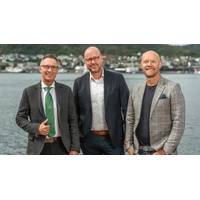
Norwegian Firms Form Subsea Distribution Alliance
capabilities of HTS Dynamics, and the distribution expertise of TESS Subsea, the alliance will offer complete subsea solutions through one, streamlined partnership.Collectively, the members of the alliance have more than 100 years of global experience in delivering solutions to the oil and gas industry.“This alliance allows us to deliver seamless, end-to-end solutions to our customers while maintaining the highest standards of quality, reliability, and efficiency,” said Ivar Kjærvik Hanson, Chief Executive Officer, Connector Subsea Solution
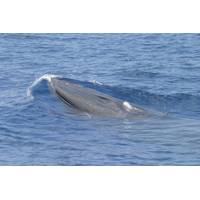
Endangered Gulf of Mexico Whale Threatened by Oil and Gas Vessel Strikes
for vessels to maintain a 500-meter (547 yards) minimum distance from the species if spotted.A federal judge last year ordered the National Marine Fisheries Service to revise its previous assessment because it did not adequately address risks species face from oil spills and vessel strikes.Oil and gas industry groups had warned that if the revised document was not produced by the judge's deadline of May 21 that vital energy operations would be shut down.Those groups, the American Petroleum Institute (API) and National Ocean Industries Association (NOIA), welcomed publication of the analysis but

Bulls Joins TVO's Global Business Development Team
our way of ensuring TVO’s essential services are accessible to companies that need reliable ways to resolve subsea challenges.”Bulls will work directly with companies that are looking for technical solutions that meet local performance and safety requirements. With 34 years in the oil and gas industry, he brings to the table not only a solid engineering background but also extensive experience in project management and execution. Bulls’ knowledge of top tensioned risers, floating production systems, and subsea systems integration, combined with technical sales and management experience

New Alliance Set Up to Boost Australia’s Subsea Sector
gas production, decommissioning, offshore wind and carbon capture. Supply chain companies are encouraged to bring innovative, collaborative and sustainable solutions to this diversified market,” said Neil Gordon, GUH chief executive.Gordon highlighted the continued production within the oil and gas industry in Australia where there are opportunities within new developments as well as in the expansion of current production by leading operators such as Woodside and Santos.This is augmented by an increasing focus on carbon capture and storage, driven by the high CO2 content in gas production in the
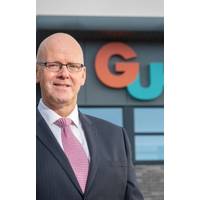
Global Underwater Hub Forms Taskforce to Improve Subsea Cable Reliability and Performance
because of the size and growth of the domestic and international markets, existing UK capabilities, and track record of developing solutions to complex technical challenges, such as the deployment of the world’s largest fixed offshore wind farms, coupled with the expertise honed in the oil and gas industry over the last five decades.Mr Gordon said: “But, in addition to cable reliability, there are other major hurdles to be overcome, varying from supply chain constraints to cost escalation. “Unlike fixed offshore wind, floating offshore wind has few standards and no established supply
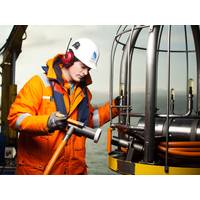
Kongsberg Discovery Acquires Naxys Technologies
company that specializes in technology for recognizing the sound of oil and gas leaks.Martin Wien Fjell, CEO of Kongsberg Discovery, points to the importance of the company's expertise in passive hydroacoustics as crucial to the transaction. Naxys provides environmental monitoring for the oil and gas industry, but is also well-positioned for growth in both the research and defence markets."Naxys Technologies ensures that oil and gas companies can be quickly notified of any leaks. This is becoming increasingly important now that the demands for sustainable operations are increasing globally,"

Smarter Than Us
that enables computers and machines to simulate human learning, comprehension, problem solving, decision making, creativity and autonomy. IBM often puts it to use to advance asset management, operational efficiency and safety, and Carol Lee Anderson, IBM’s technology GM for the oil and gas industry, explains that the aim is never to take the human out of the loop, just to rid them of laborious and repetitive tasks and provide them with real-time decision support. The article highlights a range of applications developed using AI including SLB's Lumi data and AI platform which contextualiz

 August 2025
August 2025




